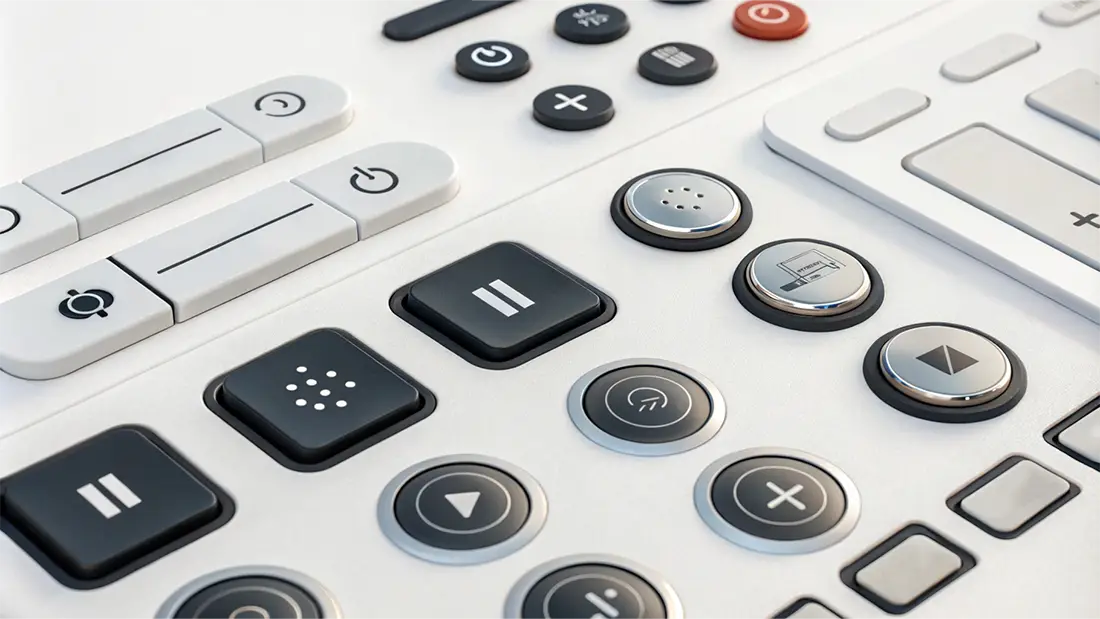Your competitor is building a skyscraper without a blueprint. From the outside, floors are being added at an impressive speed. But inside, it's chaos. The walls aren't straight, the plumbing is a nightmare, and the foundation is starting to crack. Each team runs its own pipes, creating an incoherent network that leaks everywhere. Users get lost in hallways that lead nowhere. And the technical debt, invisible at first, is cracking the foundation, making each new floor riskier and more expensive to add. This is exactly what the feature race without a Design System looks like. The result? A product that's impressive from a distance, but frustrating to use, costly to maintain, and impossible to scale gracefully. We suggest a smarter way to build.
Table of contents
Why Implement a Design System for Your SaaS? (Spoiler: It's Not Just About Making Things Pretty)
Implementing a Design System for your SaaS is a valuable investment on multiple levels. Let's forget the technicalities for a moment and talk business, performance, and growth.
TL;DR
- For C-Levels (CEO, CTO): A Design System ensures brand consistency, reduces time-to-market, and is an asset that increases your company's valuation. It's your best weapon against technical debt: fewer bugs, more velocity. A direct investment in ROI.
- For Product Teams (Product Manager, Product Owner): It guarantees a consistent user experience across the entire journey, fosters healthy collaboration with developers, and drastically speeds up iteration cycles. No more endless debates about a button's color.
- For Marketing & Sales Teams: It allows for the creation of campaigns and sales materials that are perfectly aligned with the product, reinforcing credibility and the professional perception of your brand.
- For Customer Success: A consistent and intuitive interface reduces the number of support tickets related to misunderstandings, allowing your teams to focus on higher-value tasks.
1. Consistency and Uniformity
- Unified User Experience: A Design System ensures that all products and features of your SaaS have a consistent look and feel. For the user, it's simpler. For your brand, it's more professional.
- Brand Reinforcement: A consistent visual style strengthens brand identity and creates a more memorable image. This is essential for differentiating yourself in a competitive market.
- Error Reduction: Clear guidelines for interface elements reduce design and development errors, resulting in a more reliable product and higher customer satisfaction.
2. Efficiency and Productivity
- Accelerated Development: This is the most direct benefit. Reusable components and clear guidelines allow your teams to build faster. You don't have to reinvent the wheel for every new page.
- Improved Collaboration: The Design System provides a common language for designers and developers. No more talking past each other. Everyone is talking about the same components, with the same names.
- Simplified Maintenance: A change to a central component (e.g., a button's style) is reflected everywhere. This saves time and drastically reduces the risk of regression. It's a scalable solution for your SaaS company that proactively reduces technical debt.
3. Adaptability and Scalability
- Adapting to Change: A Design System is designed to be modular and scalable. Adding a new feature or product becomes simpler and faster while ensuring consistency.
- Managing Growth: As your product and teams grow, the Design System acts as the guardian of consistency and efficiency. It prevents your interface from becoming an unmanageable patchwork.
- Integrating Company Values: A Design System is the custodian of your values. Whether it's accessibility, inclusive design, or Green UX, it allows you to embed these principles at the core of the product and deploy them consistently across the entire platform.
How It Works: The Tools to Achieve These Benefits
Now that the benefits are clear, let's take a quick look under the hood. A Design System isn't an abstract concept; it's a set of concrete tools.
What is a Design System?
A Design System is an evolving, collaborative ecosystem that serves as the single source of truth for your SaaS's design. It differs from a simple Style Guide (which only covers visual aspects) by including reusable code components and clear usage rules.
\[Image d'une infographie montrant comment un Design System pour SaaS englobe le Style Guide pour réduire la dette technique et améliorer la collaboration produit-tech.\]
Tokens: The Atoms of Your Design
Tokens are variables that store your design decisions (a color, a font size, a spacing value). Instead of hard-coding a color (#3366FF), a developer uses a token (e.g., $color-primary-500). If you decide to change that color, you only modify the token, and the change is applied everywhere. This is the key to maintainability and customization.
The Component Library: The Building Blocks of Your Interface
This is a set of reusable user interface components (buttons, forms, menus, etc.), already coded and ready to use (an UI kit). Each component is built from tokens and follows the rules defined in the Design System, ensuring perfect consistency.
How to Implement a Design System That Works
Creating a Design System is a significant undertaking, but it can be approached in simple, logical steps.
- The Audit: Start with What You Have. Take inventory of all your current components, styles, and colors. Identify inconsistencies and weak points to know where you stand. Also, perform a user experience audit.
- The Foundation: Define the Rules of the Game. Establish the basic principles of your design: accessibility, component naming conventions, token structure. This is your architect's blueprint.
- Iterative Construction: Start Small and Evolve. No need to build everything at once. Begin with the most used elements (colors, typography, buttons) and gradually enrich your library.
- Documentation: The Shared Manual. A Design System is only useful if it's used. Create clear and accessible documentation so that all teams (current and future) speak the same language.
Conclusion: Done with Theory?
A well-crafted Design System can cut your new feature development time in half. That's real impact. It's the investment that turns a good idea into a scalable, coherent product that users love.
Let's discuss auditing your interface and building a Design System that will finally align your teams and get your product ready to scale. Book a consultation with one of our UX experts.
Discover how our mockup and prototype services can bring your ideas to life! Explore our full range of design solutions and let our experts create custom mockups for your business. Ready to turn your concepts into reality?






